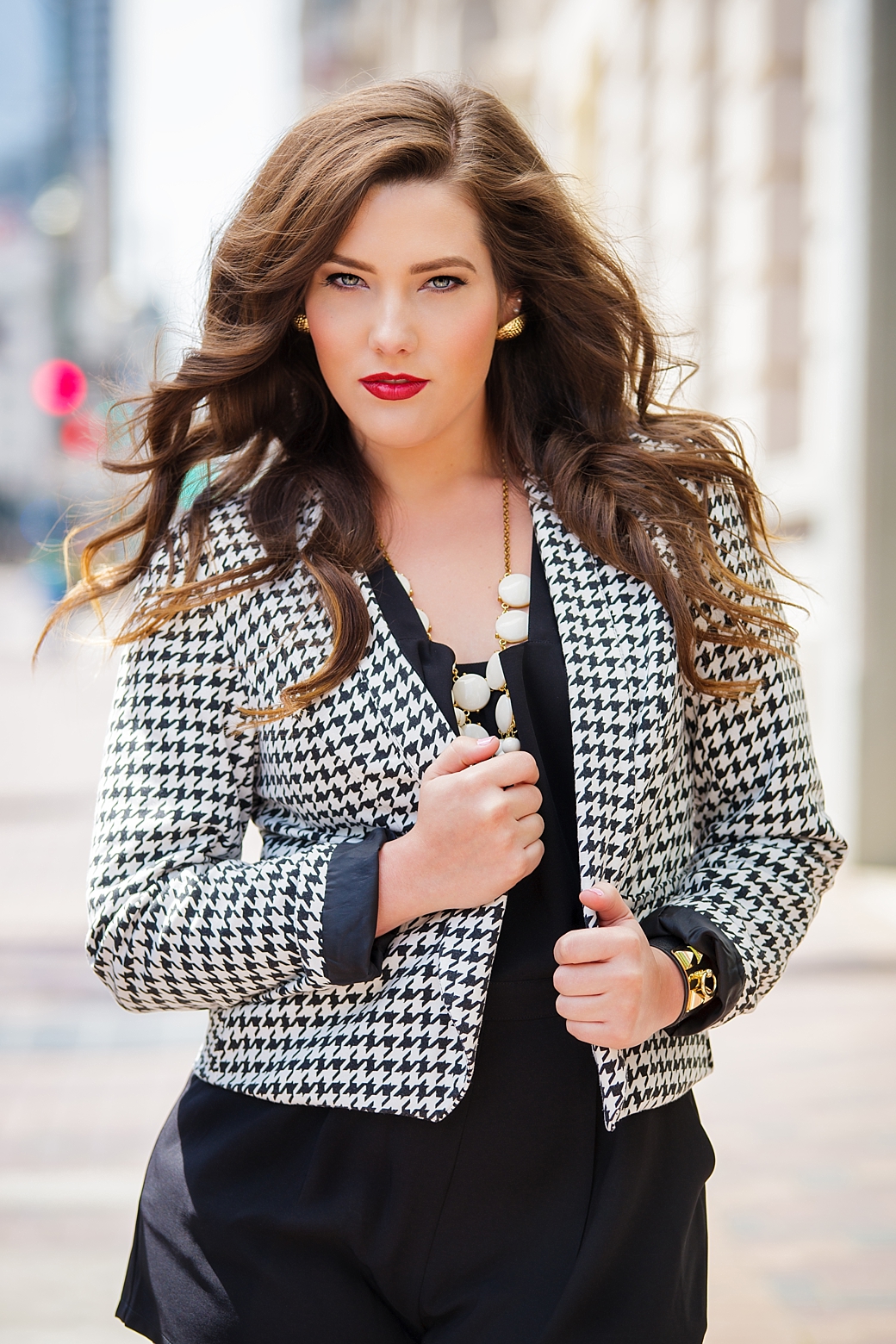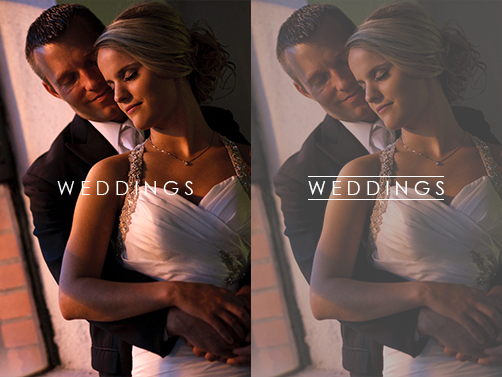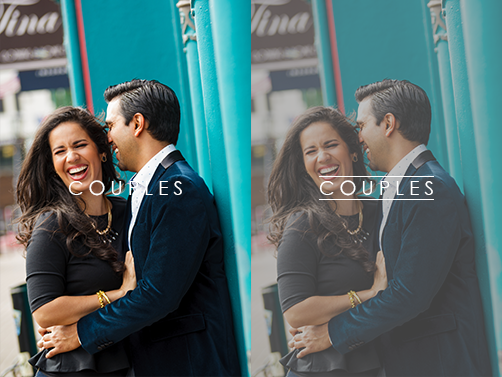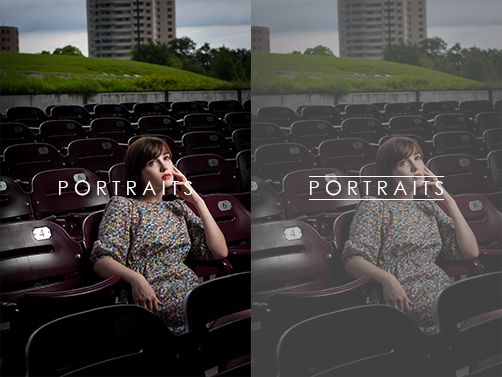One thing that I have learned over the years is that you can shoot ANYWHERE, ANYTIME. I have always found it such a hinderance to limit my sessions to the early morning or late afternoon. I completely understand that many people love the look of that “golden hour” lighting. I also think it is great. HOWEVER, it doesn’t always work for every shoot, or every client. I love the challenge of shooting on a whim, wherever we end up, and at whatever time we (the client and I) are available. It has always forced me to be creative and not allow my work to become dependent on a time of day, or specific light source.
The most difficult challenge in shooting outside of those early and late times is (obviously) the sun. The sun is direct, specular, and BRIGHT! This causes the most harsh shadows, squinty eyes from your subjects, and can cause a color cast at times. Having your clients squint in their portraits is simply unflattering. A face full of harsh shadows are (usually) unflattering, especially on females. Green grass is pretty, but not when the sun bounces off of it and causes your subjects to look like the undead.
There are a few things that I always try to keep in mind when shooting in the mid-day sun.

Back to the sun (most of the time) – One rule of thumb for shooting in “natural lighting” is to place the sun to your subject’s back. In most cases, this will allow you to expose for the subjects face, and blow out the warm sun in the background, causing a soft/”airy” look that is all the craze. When shooting in the mid-day sun, this still works. In almost every image, Abigail’s back is to the sun. Even if the sun is “high noon”, it rarely is DIRECTLY overhead. You can almost always position your subject to have the sun behind them, even if only shining down on the crown of their head. This allows you to (without any other tools) mitigate the sunlight that is directly falling on their face. It is usually ok to have hot spots on the shoulders, or hands, hair, etc. However, hot spots on the face are much harder to accommodate or correct.
The shade (or diffusion) is your friend – In every image, I was able to place Abigail in some sort of shade and/or use a diffusion panel (center of a round reflector) to soften the light on her. In the above and very bottom image, I had my assistant hold a diffusion panel. In the images below, I placed her within the shade of the trees. The shade from the trees acted as a type of diffusion or shade. In the below/right image, I liked the way the light was peeking through the trees and onto her face subtly. I typically don’t mind harsh shadow on the subject’s face ONLY if they are intentional AND are not caused by the subject’s facial features (such as “raccoon eyes” from eyebrows, or lip/eyelash/hair shadows).

Environment is key – One thing that really helped in these images was the fact that the environment was fairly neutral in color. I didn’t have to worry or correct for the sun bouncing off of a colored ground/wall surface and hitting Abigail. These color casts are VERY difficult to correct for in post production without adjusting the overall color balance of the rest of the scene. There was some VERY MINOR green cast in the above/left image due to the trees, but it was largely unnoticeable. Had the wall in the above image been more colorful, the sun would have reflected off of its surface and onto Abigail’s face. Sometimes that can cause a cool effect, but not what I was going for in this series.
Shadow placement matters – As I mentioned before, where the shadows fall on your subject should be deliberate, always. I don’t mean that every shadow is intentional, but that you are aware of them and have attempted to mitigate or accept them. The human eye is naturally attracted to points of contrast in an image and the most common contrast on a sunny day is between the lights/shadows within a scene. You have to look at the overall composition of your image and make a decision on where your focus is. If it is meant to be on the subject’s face, you may want to spend a little time working on the light/shadow of that area of the image more than another area.

In the end, you should shoot to a style that is unique to you but don’t let fear dictate what that style is. I am a huge fan of off camera lighting and I love the ability to control the lighting in my images. That doesn’t mean that I don’t shoot in natural light or mix it up from time to time. Photographers should always be striving to challenge their existing abilities. Learn to shoot in any environment and use whatever tools you must to do so.
If you like this post, please comment and share!




